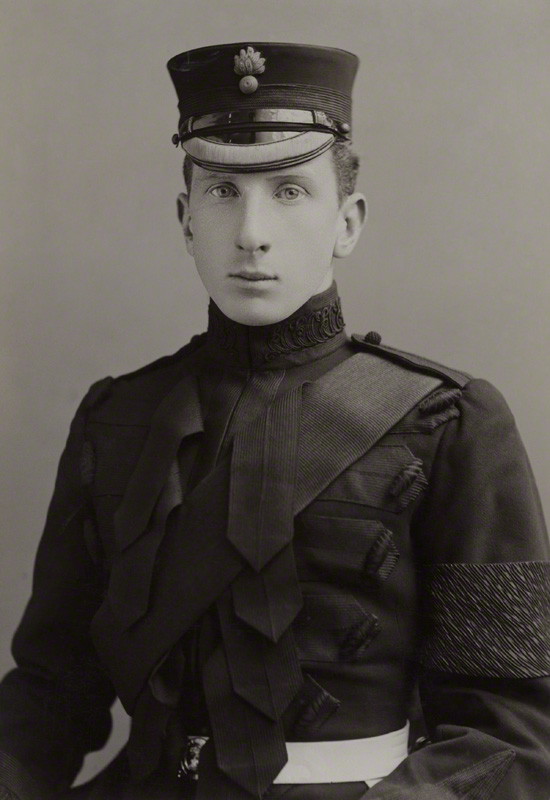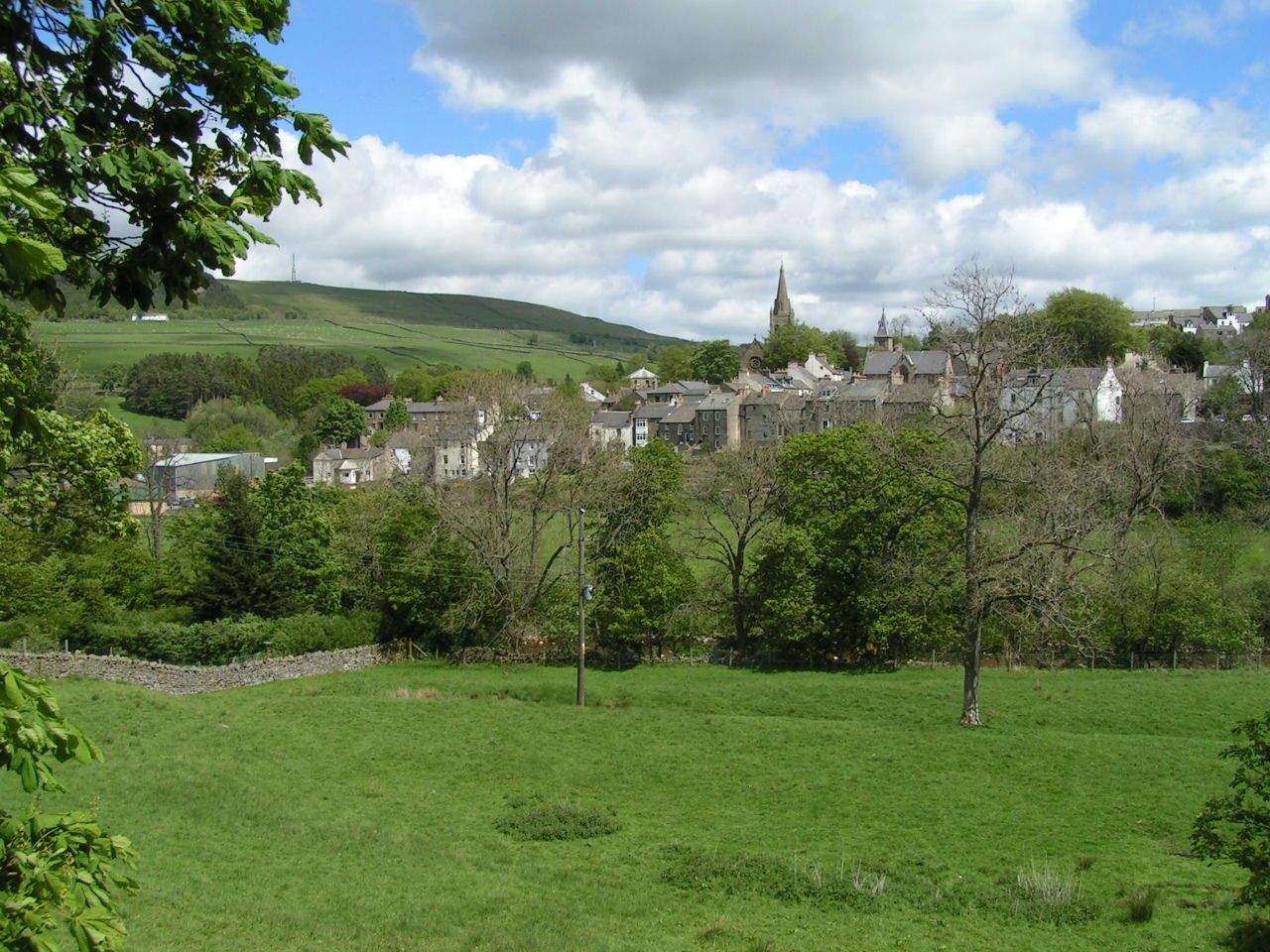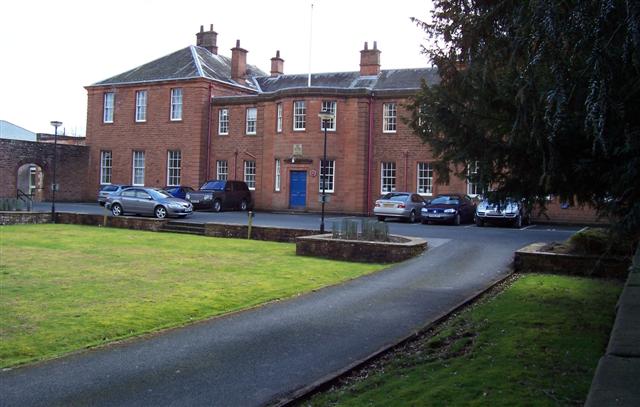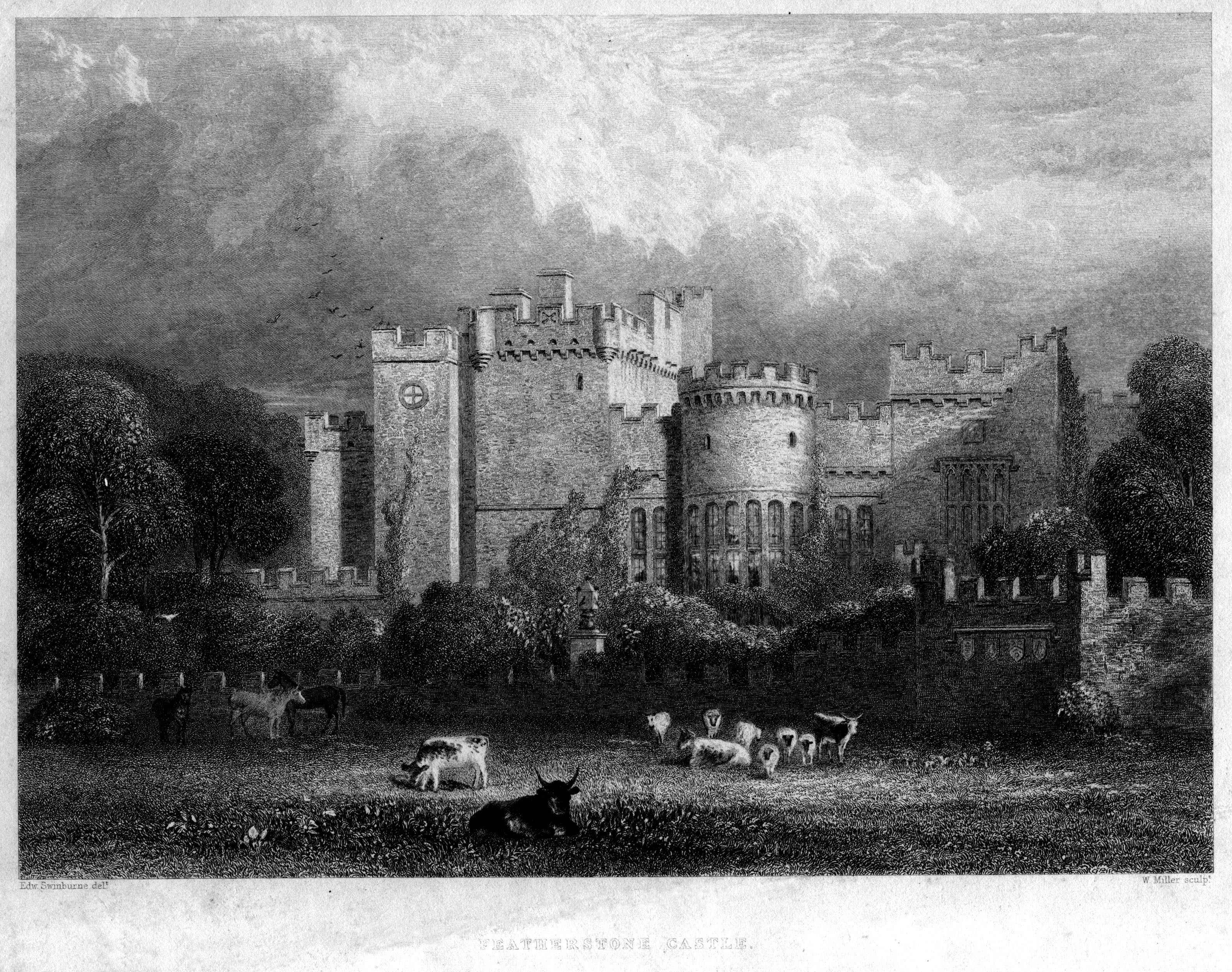|
Knarsdale
Knarsdale, historically Knaresdale, is a village and former civil parish, now in the parish of Knaresdale with Kirkhaugh, in Northumberland, England about north of Alston. The village takes its name from the Knarr Burn: Knarr means 'rugged rock'. In 1951 the parish had a population of 289. History The manor of Knarsdale was held in medieval times by the Swinburn family, and in 1313 Hugh de Swinburn was rector of Knarsdale. It was later held by the Wallis family, who sold it in 1730 to John Stephenson, a Newcastle merchant. One of the Stephenson family built Alston market cross. But in 1769 Knarsdale was sold to James Wallace, a distinguished lawyer. His son Thomas, for services to his country, was created Baron Wallace of Knarsdale. The family also owned Featherstone Castle, and Hodgson described Knarsdale Hall as having declined in importance — ''a gentleman's place of the 17th century now and for a long time since occupied by the farmer of the adjoining gr ... [...More Info...] [...Related Items...] OR: [Wikipedia] [Google] [Baidu] |
Knaresdale With Kirkhaugh
Knarsdale, historically Knaresdale, is a village and former civil parish, now in the parish of Knaresdale with Kirkhaugh, in Northumberland, England about north of Alston. The village takes its name from the Knarr Burn: Knarr means 'rugged rock'. In 1951 the parish had a population of 289. History The manor of Knarsdale was held in medieval times by the Swinburn family, and in 1313 Hugh de Swinburn was rector of Knarsdale. It was later held by the Wallis family, who sold it in 1730 to John Stephenson, a Newcastle merchant. One of the Stephenson family built Alston market cross. But in 1769 Knarsdale was sold to James Wallace, a distinguished lawyer. His son Thomas, for services to his country, was created Baron Wallace of Knarsdale. The family also owned Featherstone Castle, and Hodgson described Knarsdale Hall as having declined in importance — ''a gentleman's place of the 17th century now and for a long time since occupied by the farmer of the adjoining gr ... [...More Info...] [...Related Items...] OR: [Wikipedia] [Google] [Baidu] |
Northumberland County Council
Northumberland County Council is a unitary authority in North East England. The population of the non-metropolitan unitary authority at the 2011 census was 316,028. History It was formed in 1889 as the council for the administrative county of Northumberland. The city of Newcastle upon Tyne was a county borough independent from the county council, although the county council had its meeting place at Moot Hall, Newcastle upon Tyne, Moot Hall in the city. Tynemouth subsequently also became a county borough in 1904, removing it from the administrative county. The county was further reformed in 1974, becoming a non-metropolitan county and ceding further territory around the Newcastle conurbation to the new metropolitan county of Tyne and Wear. As part of the 2009 structural changes to local government in England it became a unitary authority with the same boundaries, this disregarded the referendum held in 2005 in which the population voted against the forming of a unitary authority. ... [...More Info...] [...Related Items...] OR: [Wikipedia] [Google] [Baidu] |
Northumberland
Northumberland () is a county in Northern England, one of two counties in England which border with Scotland. Notable landmarks in the county include Alnwick Castle, Bamburgh Castle, Hadrian's Wall and Hexham Abbey. It is bordered by land on three sides; by the Scottish Borders region to the north, County Durham and Tyne and Wear to the south, and Cumbria to the west. The fourth side is the North Sea, with a stretch of coastline to the east. A predominantly rural county with a landscape of moorland and farmland, a large area is part of Northumberland National Park. The area has been the site of a number of historic battles with Scotland. Name The name of Northumberland is recorded as ''norð hẏmbra land'' in the Anglo-Saxon Chronicle, meaning "the land north of the Humber". The name of the kingdom of ''Northumbria'' derives from the Old English meaning "the people or province north of the Humber", as opposed to the people south of the Humber Estuary. History ... [...More Info...] [...Related Items...] OR: [Wikipedia] [Google] [Baidu] |
Hexham (UK Parliament Constituency)
Hexham is a constituency in Northumberland represented in the House of Commons of the UK Parliament since 2010 by Guy Opperman, a Conservative. As with all constituencies, the constituency elects one Member of Parliament (MP) by the first past the post system of election at least every five years. The seat was created as one of four single member divisions of the county of Northumberland under the Redistribution of Seats Act 1885. Constituency profile The second-largest constituency by land area in England (covering 250,992 hectares), Hexham reaches to the Pennines and is traversed by Hadrian's Wall, which runs almost due east–west through England. It includes substantial agricultural holdings, forestry, wood processing, food, minerals, and manufactured hardware industries. In the midst of the northwest of the constituency is Kielder Water; running between this area and the middle of the seat is the southern portion of Kielder Forest, and in the west, the attractions of the ... [...More Info...] [...Related Items...] OR: [Wikipedia] [Google] [Baidu] |
Civil Parish
In England, a civil parish is a type of administrative parish used for local government. It is a territorial designation which is the lowest tier of local government below districts and counties, or their combined form, the unitary authority. Civil parishes can trace their origin to the ancient system of ecclesiastical parishes, which historically played a role in both secular and religious administration. Civil and religious parishes were formally differentiated in the 19th century and are now entirely separate. Civil parishes in their modern form came into being through the Local Government Act 1894, which established elected parish councils to take on the secular functions of the parish vestry. A civil parish can range in size from a sparsely populated rural area with fewer than a hundred inhabitants, to a large town with a population in the tens of thousands. This scope is similar to that of municipalities in Continental Europe, such as the communes of France. However, ... [...More Info...] [...Related Items...] OR: [Wikipedia] [Google] [Baidu] |
Alston, Cumbria
Alston is a town in Cumbria, England, within the civil parish of Alston Moor on the River South Tyne. It shares the title of the 'highest market town in England', at about above sea level, with Buxton, Derbyshire. Despite its altitude, the town is easily accessible via the many roads which link the town to Weardale, Teesdale, and towns in Cumbria such as Penrith via Hartside Pass, as well as Tynedale. Historically part of Cumberland, Alston lies within the North Pennines, a designated Area of Outstanding Natural Beauty. Much of the town centre is a designated Conservation Area which includes several listed buildings. Geography Alston lies within the North Pennines Area of Outstanding Natural Beauty, more than by road from the nearest town, Haltwhistle, and is surrounded by moorland. Nearby villages include Garrigill and Nenthead. It is around west of Newcastle upon Tyne, south east of Carlisle, north east of Penrith, and south west of Hexham. Situated at the crossroads/j ... [...More Info...] [...Related Items...] OR: [Wikipedia] [Google] [Baidu] |
A Vision Of Britain Through Time
The Great Britain Historical GIS (or GBHGIS) is a spatially enabled database that documents and visualises the changing human geography of the British Isles, although is primarily focussed on the subdivisions of the United Kingdom mainly over the 200 years since the first census in 1801. The project is currently based at the University of Portsmouth, and is the provider of the website ''A Vision of Britain through Time''. NB: A "GIS" is a geographic information system, which combines map information with statistical data to produce a visual picture of the iterations or popularity of a particular set of statistics, overlaid on a map of the geographic area of interest. Original GB Historical GIS (1994–99) The first version of the GB Historical GIS was developed at Queen Mary, University of London between 1994 and 1999, although it was originally conceived simply as a mapping extension to the existing Labour Markets Database (LMDB). The system included digital boundaries for r ... [...More Info...] [...Related Items...] OR: [Wikipedia] [Google] [Baidu] |
James Wallace (British Politician)
James Wallace (1729–1783), of Carleton Hall, Cumbria, was an English barrister, Member of Parliament, Solicitor General and Attorney General. Life The son of Thomas Wallace, of Asholme, Northumberland, attorney-at-law, Wallace entered Lincoln's Inn and was called to the Bar in 1757. In 1770, he was elected as one of the Members of Parliament for Horsham in Sussex. In 1778, he was appointed Solicitor General for England and Wales and in 1780 Attorney General. He died in 1783 and was buried in Exeter Cathedral.John Burke, ''Burke's Genealogical and Heraldic History of the Landed Gentry'', Volume 2p. 1495online at books.google.co.uk On 8 January 1767 Wallace had married Elizabeth, only daughter and sole heiress of Thomas Simpson, Esquire, of Carleton Hall, Cumberland, and they had two children, his son and heir Thomas Wallace, 1st Baron Wallace Thomas Wallace, 1st Baron Wallace, PC DCL FRSE (1768 – 23 February 1844) was an English politician holding multiple key roles ... [...More Info...] [...Related Items...] OR: [Wikipedia] [Google] [Baidu] |
Thomas Wallace, 1st Baron Wallace
Thomas Wallace, 1st Baron Wallace, PC DCL FRSE (1768 – 23 February 1844) was an English politician holding multiple key roles in the government. Early life Wallace was born at Brampton in 1768, the son of James Wallace (1729–1783), a barrister who served as Solicitor General for England and Wales and as Attorney General to George III, and his wife, Elizabeth Simpson, the only daughter and sole heiress of Thomas Simpson Esq., of Carleton Hall, Cumberland. He was educated at Eton College from 1777 to 1784. He then studied at Christ Church at Oxford University, graduating MA in 1790. Following the death of his father in 1783, he inherited (at age 15) Carleton Hall, which lies near Penrith, Cumbria. In 1793 he was elected a Fellow of the Royal Society of Edinburgh. His proposers were Andrew Dalzell, Henry Brougham and Alexander Fraser Tytler. He sold the Carleton estate in 1828 to John Cowper. He then acquired Featherstone Castle near Haltwhistle, Northumberland and ... [...More Info...] [...Related Items...] OR: [Wikipedia] [Google] [Baidu] |
Featherstone Castle
Featherstone Castle, a Grade I listed building, is a large Gothic style country mansion situated on the bank of the River South Tyne about southwest of the town of Haltwhistle in Northumberland, England. Medieval origins In the 11th century the manor house on this site belonged to the Featherstonehaugh family. It has played an important role in the battles between the English and the Scots. Originally a 13th-century hall house, a square three-storey pele tower was added in 1330 by Thomas de Featherstonehaugh. A survey from the year 1541 reported the property to be a tower in good repair, occupied by Thomas Featherstonehaugh. The earliest recorded history of this area derives from the Roman occupation period; in 122 AD, the Romans erected Hadrian's Wall, the course of which lies about 5 kilometres to the north of Featherstone Castle. Post medieval In the 17th century the property was acquired by Sir William Howard (father of the 1st Earl of Carlisle) and was remodelled and s ... [...More Info...] [...Related Items...] OR: [Wikipedia] [Google] [Baidu] |
John Hodgson (antiquary)
John Hodgson (1779–1845) was an English clergyman and antiquary, known as the county historian of Northumberland. Early life The son of Isaac Hodgson and Elizabeth, daughter of William Rawes, he was born at Swindale, in the parish of Shap, Westmoreland, on 4 November 1779; his father was a stonemason. Hodgson studied at the grammar school of Bampton from the age of seven to nineteen. He learned a good deal of classics, mathematics, chemistry, botany, and geology, and acquired an interest in natural history and local antiquities, through rambles in the countryside. His parents were too poor to make a university education possible, and at the age of twenty he started work as the master of the village school at Matterdale, near Ullswater. He soon moved to a school at Stainton, near Penrith. Early in 1801 he was appointed to the school of Sedgefield in County Durham, where the endowment was £20. The rector of Sedgefield, George Barrington, was a nephew of Shute Barrington, t ... [...More Info...] [...Related Items...] OR: [Wikipedia] [Google] [Baidu] |
House Of Commons Of The United Kingdom
The House of Commons is the lower house of the Parliament of the United Kingdom. Like the upper house, the House of Lords, it meets in the Palace of Westminster in London, England. The House of Commons is an elected body consisting of 650 members known as members of Parliament (MPs). MPs are elected to represent constituencies by the first-past-the-post system and hold their seats until Parliament is dissolved. The House of Commons of England started to evolve in the 13th and 14th centuries. In 1707 it became the House of Commons of Great Britain after the political union with Scotland, and from 1800 it also became the House of Commons for Ireland after the political union of Great Britain and Ireland. In 1922, the body became the House of Commons of the United Kingdom of Great Britain and Northern Ireland after the independence of the Irish Free State. Under the Parliament Acts 1911 and 1949, the Lords' power to reject legislation was reduced to a delaying power. The g ... [...More Info...] [...Related Items...] OR: [Wikipedia] [Google] [Baidu] |




.jpg)


